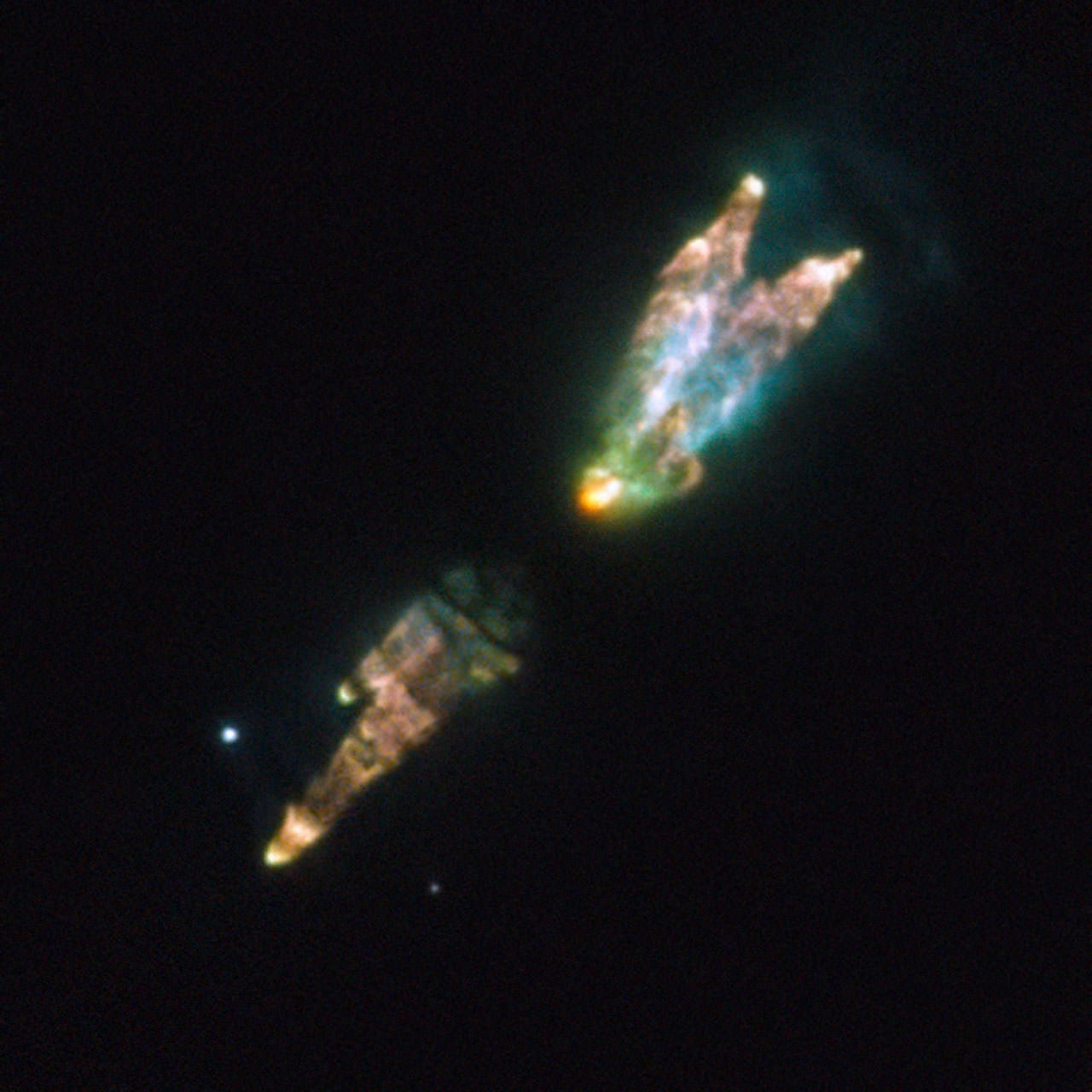[/caption]
Looking oddly reminiscent of the "V" depicted in the logo for the sci-fi television series "V," this has to be one of the strangest objects in space. It's the Westbrook Nebula — also known as PK166-06, CRL 618 and AFGL 618 — and is a protoplanetary nebula. But this highly irregular bundle of disconnected jets and clouds is the result of a burst of a dying star expelling toxic gases such as carbon monoxide and hydrogen cyanide. Well, toxic to us, anyway, but maybe not to The Visitors!
There are only a few hundred protoplanetary nebulae known in the Milky Way. The appear during a star's rapid stellar evolution between the late asymptotic giant branch phase and the subsequent planetary nebula phase.
But these short-lived clouds of gas are faint and very hard to see. They emit strong in infrared radiation, and are cool in temperature, so they emit small amounts of visible light. So, astronomers have a few tricks up their telescopic sleeves to try and get images of protoplanetary nebula, and the results are well worth it, as this image demonstrates.
This is a composite image where the astronomers have used exposures in visible light which shows light reflected from the cloud of gas, combined with other exposures in the near-infrared part of the spectrum, showing the dim glow, invisible to human eyes, that is coming from different elements deep in the cloud itself, so this is a kind of reflection nebula.
(See the
"Light Echoes" podcast by Astronomy Cast
for more information on reflected light.)
Hubble has taken images of the Westbrook Nebula before,
but this new one is clearly sharper and provides more detail.
See more info on what techniques were used at the Hubble ESA website.
 Universe Today
Universe Today
